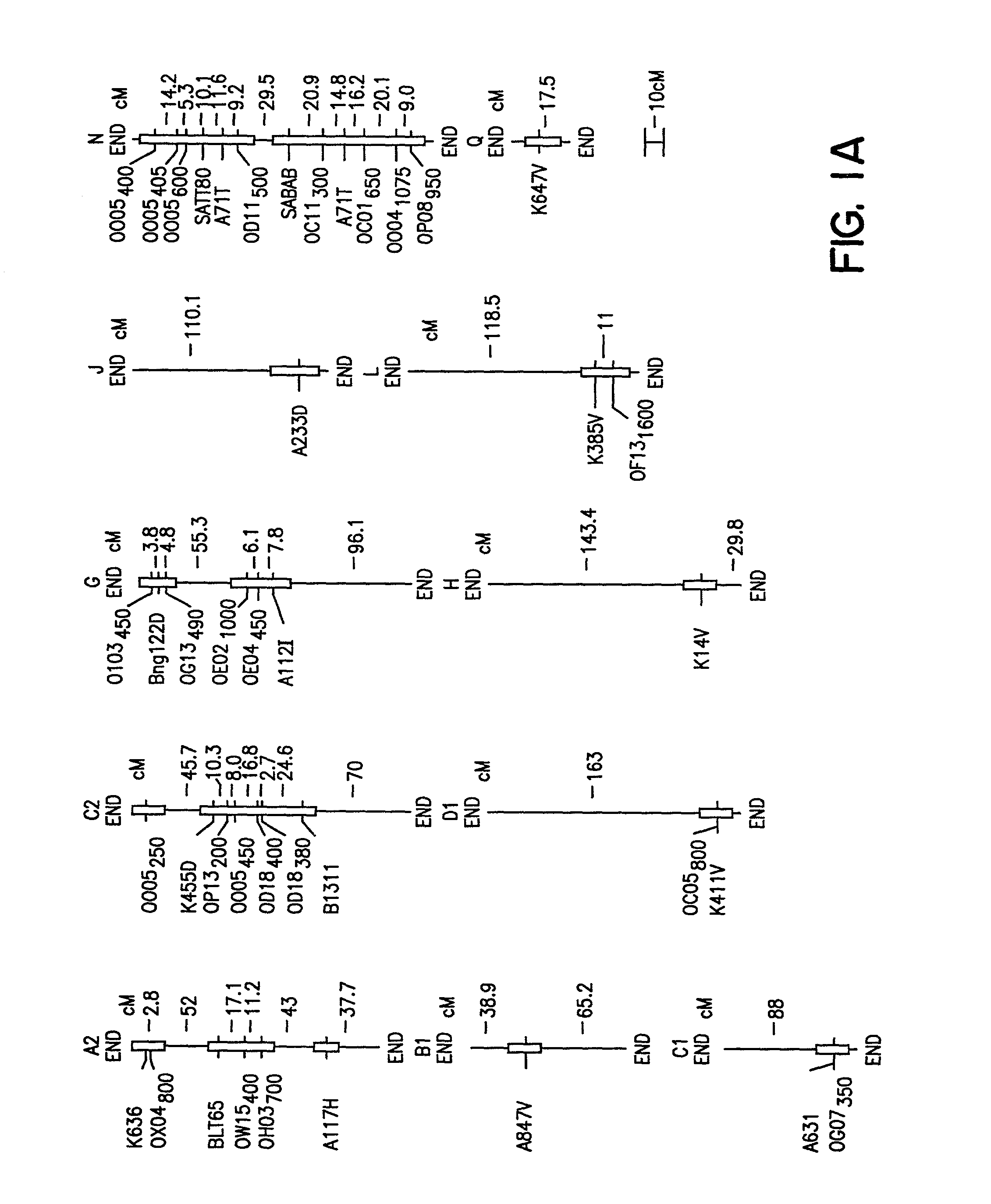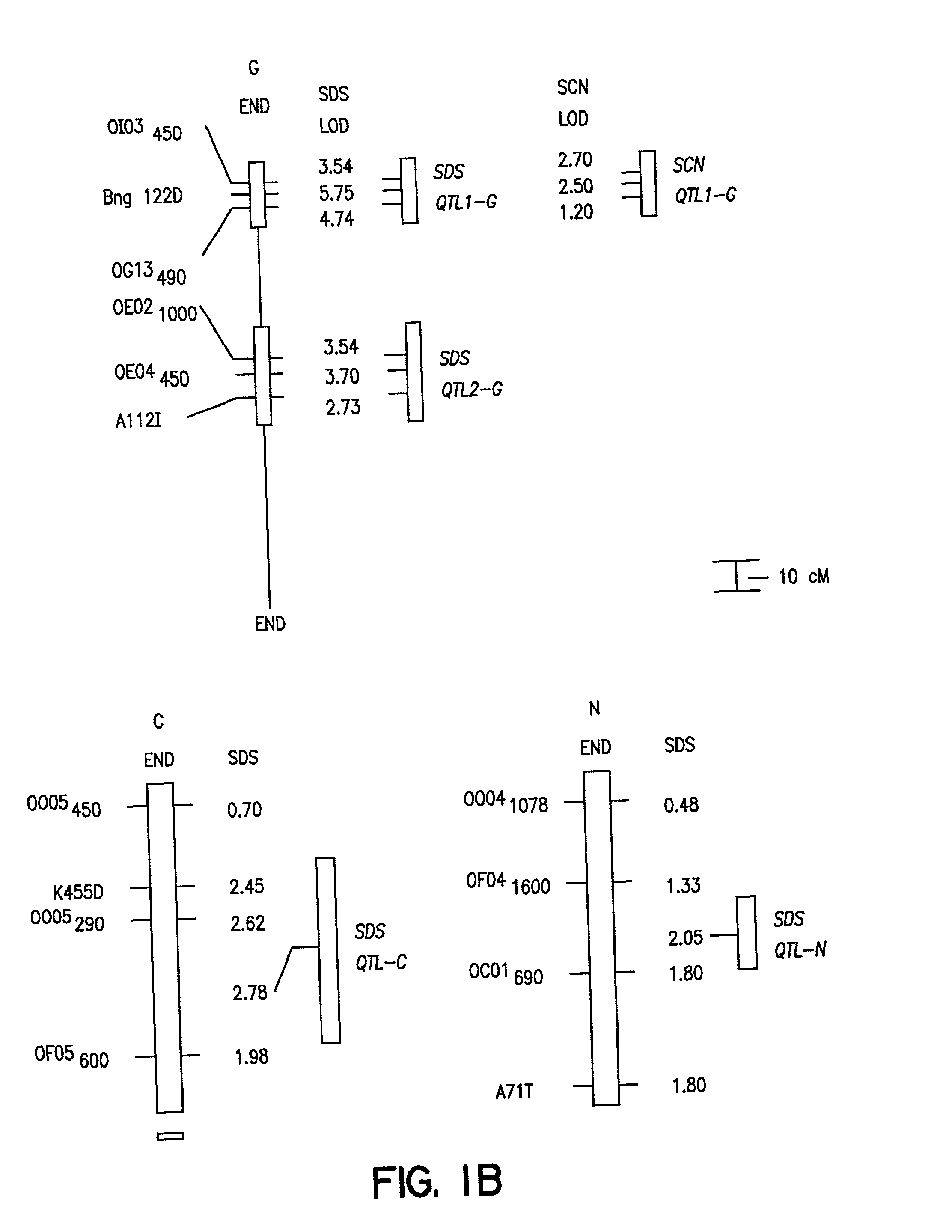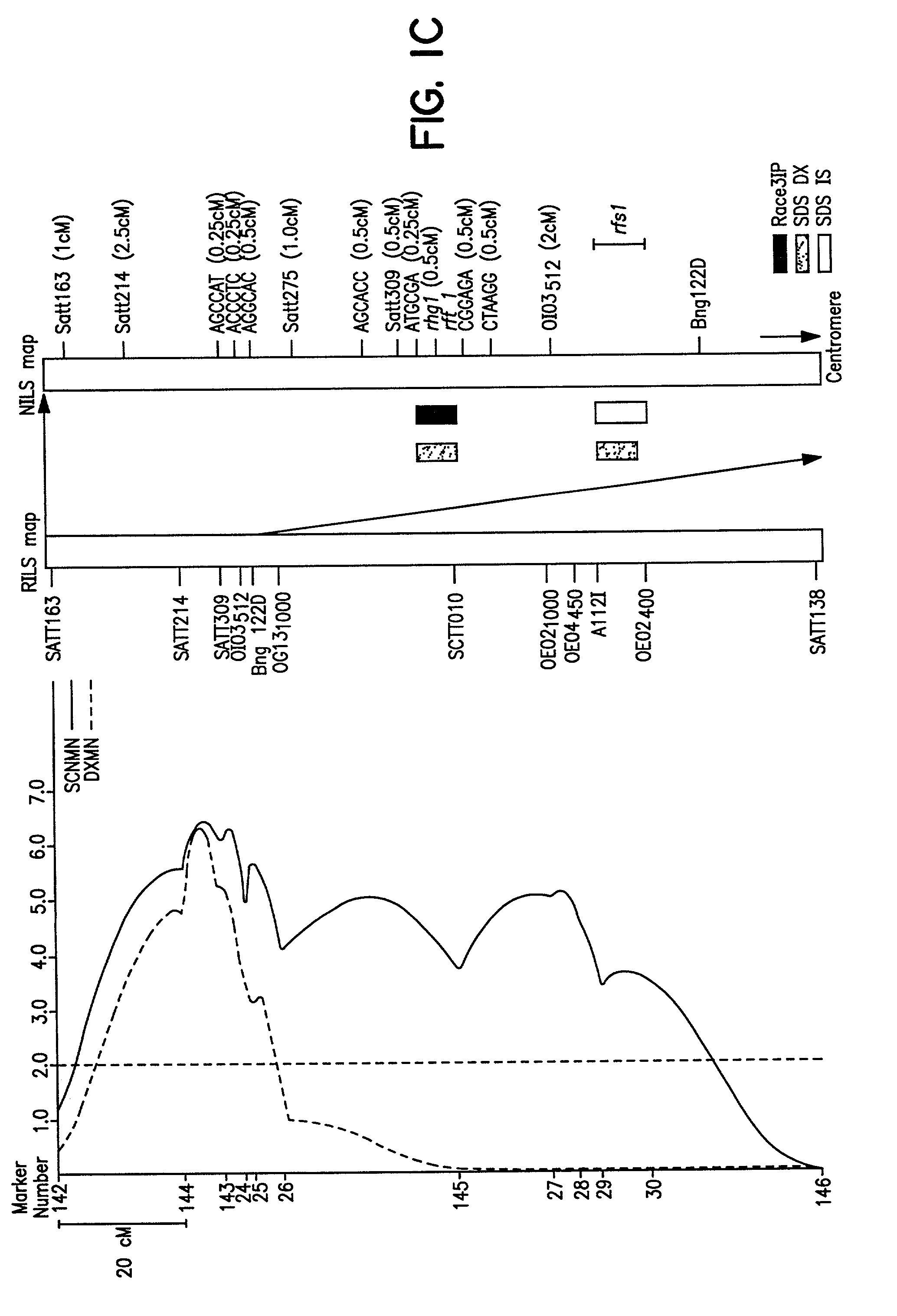Soybean sudden death syndrome resistant soybeans, soybean cyst nematode resistant soybeans and methods of breeding and identifying resistant plants
a technology of soybean cyst nematode and soybean, which is applied in the field of soybean sudden death syndrome resistant soybeans, can solve the problems of difficult breeding for resistant plants, uneconomical and environmentally sound use of fungicides as a control measure in soybean production, and difficulty in breeding for resistant cultivars, etc., to improve the selection of sds and scn resistance in soybean, and improve the process of soybean breeding.
- Summary
- Abstract
- Description
- Claims
- Application Information
AI Technical Summary
Benefits of technology
Problems solved by technology
Method used
Image
Examples
example 2
Identification of an SDS Resistance Locus in Forrest in the Greenhouse
[0118] Materials and Methods
[0119] Fusarium solani strain ST90, maintained on 5.times. Bilays medium at 19 C., was transferred onto PDA plates at 28 C. for inoculum preparation. The 40 E.times.F RILs used were the 20 most resistant to SDS in the field and the 20 most susceptible to SDS in the field.
[0120] Infested Seed Assay
[0121] Plants were inoculated employing the infested oat technique (Stephens et al., 1993). Oats were soaked in tap water overnight, then excess water was strained away. The 150 ml portions were put into 250 ml Erlenmeyer flasks, capped, and autoclaved for 20 minutes. Oats were then cooled and three 1 cm.sup.2 agar plugs from the colony borders of F.solani petri plates were aseptically added to the sterilized oats. The inoculated oats were incubated in the dark at room temperature (24 C) for three weeks. Flasks were constantly shaken for uniform growth. Plants were grown in a soil medium contai...
example 3
Identification of Two SDS Resistance Genes Close to a SCN Resistance Gene in Forrest
[0133] Materials and Methods
[0134] Plant Material
[0135] The cross of `Essex` (Smith and Camper, 1973) by `Forrest` (Hartwig and Epps, 1973) (E.times.F) was made and an F.sub.5 derived population of 100 RILs generated. During the studies described herein the RILs were advanced to the F.sub.5:13 generation from never less than 300 plants per generation. Essex is susceptible to both SDS and SCN, while Forrest is resistant to both SDS and SCN race 3 (Gibson et al. 1994; Hnetkovsky et al. 1996). The potential for unintentional natural selection for resistance to SDS or resistance to SCN was reduced by all inbreeding being carried out in fields with low incidences of soybean cyst nematodes (SCN) and no history of SDS symptoms.
[0136] Residual heterogeneity within RILs, theoretically 6.25%, was about 8% as detected by codominant markers at the F.sub.5:9 (Hnetkovsky et al. 1996; Chang et al. 1996). For the RF...
example 4
[0166] Identification of SDS Resistance Loci in Pyramid Close to SCN Race 3 Resistance Loci
[0167] Materials and Methods
[0168] Identical to Examples 1 and 3 with the following exceptions.
[0169] Plant Material
[0170] The Pyramid by Douglas (P.times.D) F6 derived population of soybean recombinant inbred lines (RILs) is a typical "South by North" cross. Douglas is SDS and SCN susceptible and Pyramid is SDS, SCN race 3 and SCN race 14 resistant. SCN race 14 resistance derives from PI88.788. SSR Protocol-Polymerase Chain Reaction (PCR):
[0171] Amplifications were performed in a Perkin-Elmer 9600V is thermal cycler after Akkaya et al., (1995). Primers were gifts from Dr. Cregan, USDA-ARS, Beltsville, MD or purchased from Research Genetics.
[0172] Results
[0173] Heritability
[0174] The broad sense heritability determination of 0.8 for DI indicated the number of plants showing SDS leaf symptoms within inbred lines was highly consistent. With heritability high non-genetic variation was well contro...
PUM
| Property | Measurement | Unit |
|---|---|---|
| temperatures | aaaaa | aaaaa |
| temperatures | aaaaa | aaaaa |
| temperatures | aaaaa | aaaaa |
Abstract
Description
Claims
Application Information
 Login to View More
Login to View More - R&D
- Intellectual Property
- Life Sciences
- Materials
- Tech Scout
- Unparalleled Data Quality
- Higher Quality Content
- 60% Fewer Hallucinations
Browse by: Latest US Patents, China's latest patents, Technical Efficacy Thesaurus, Application Domain, Technology Topic, Popular Technical Reports.
© 2025 PatSnap. All rights reserved.Legal|Privacy policy|Modern Slavery Act Transparency Statement|Sitemap|About US| Contact US: help@patsnap.com



